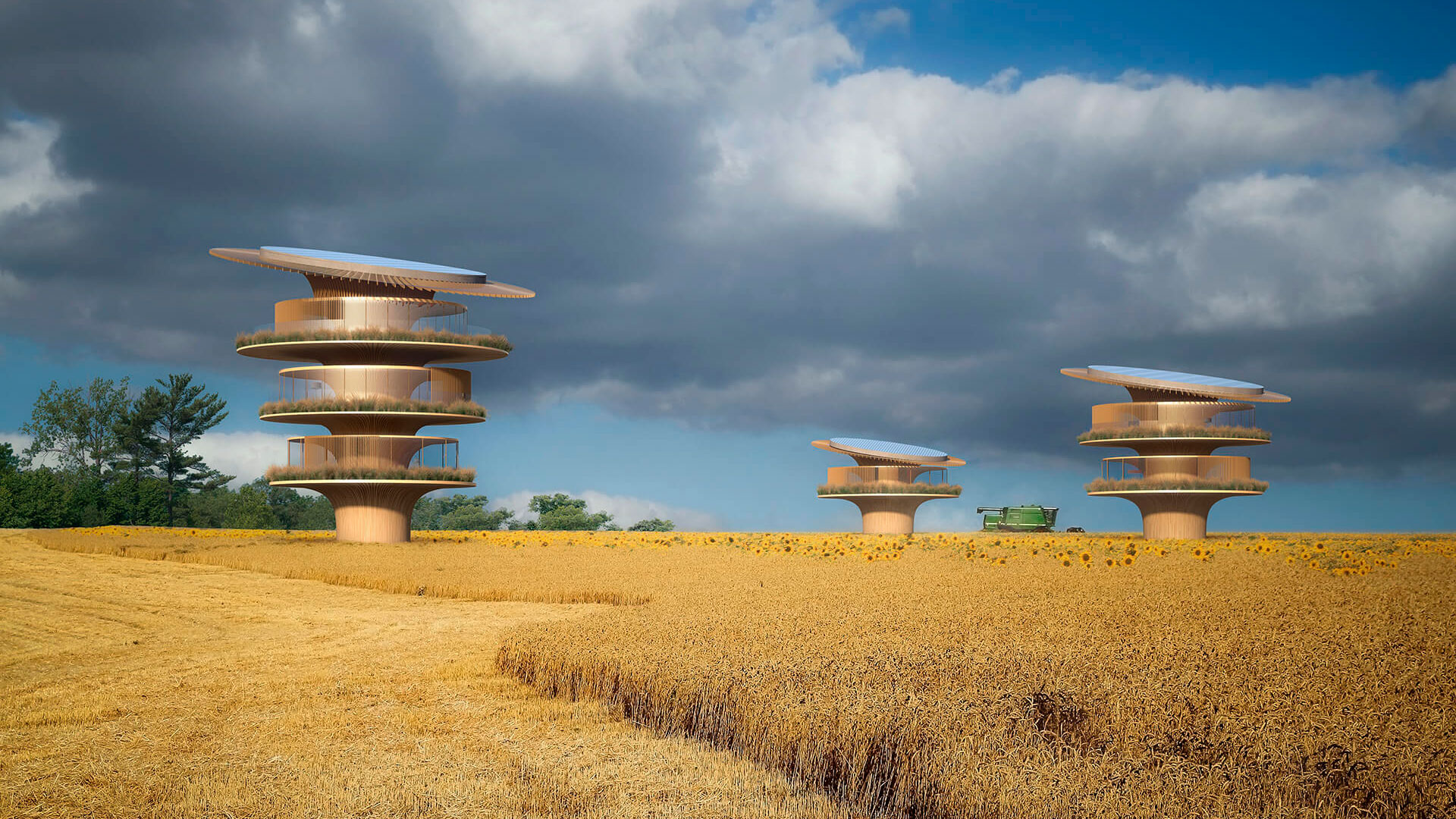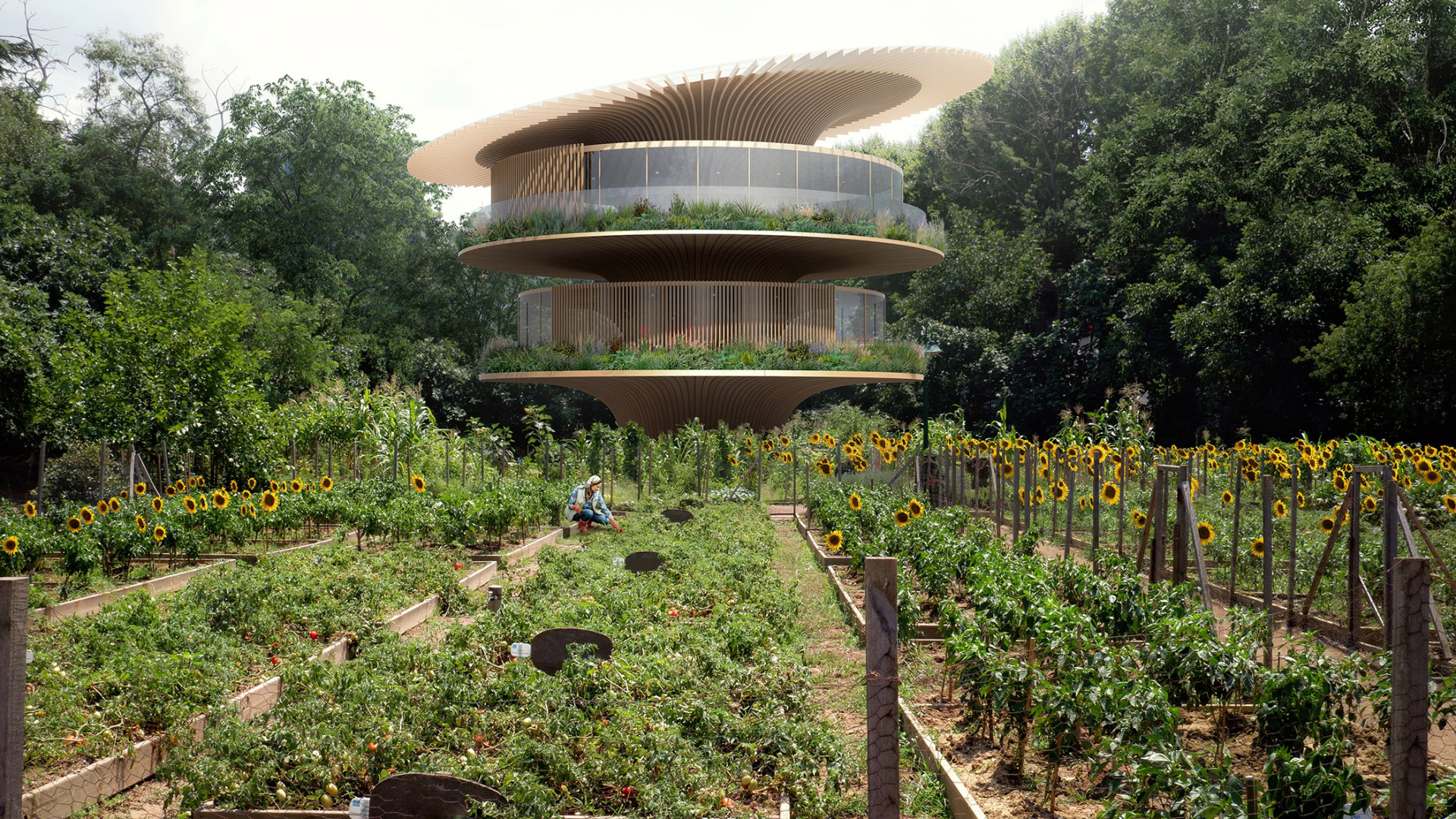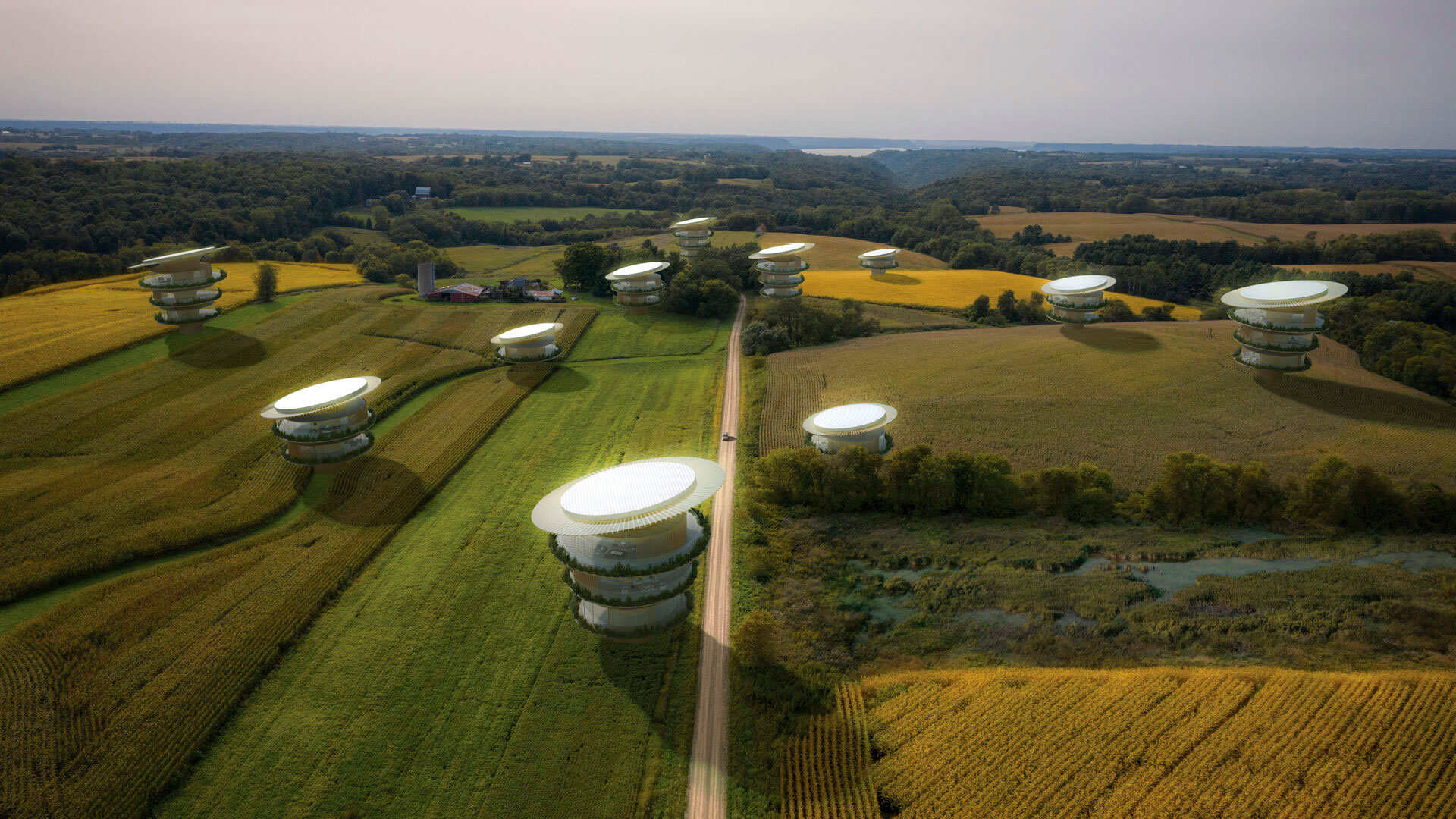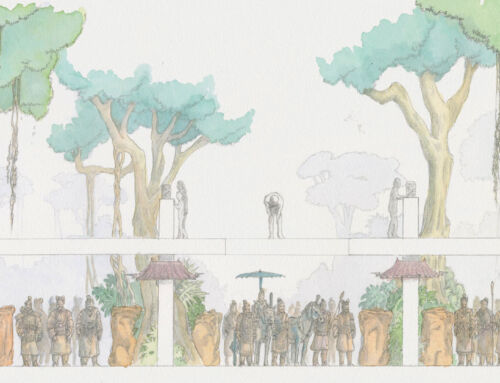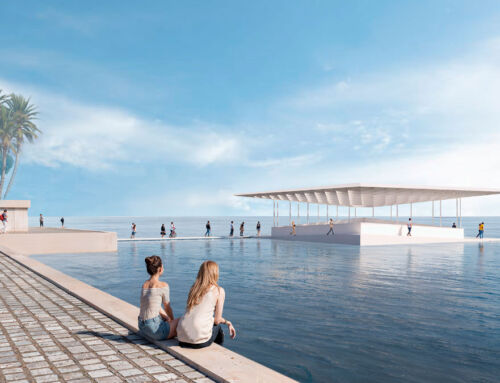Japanese architect Koichi Takada proposes a shift in the fundamentals of modern architecture: instead of following the principle that “form follows function“, which he attributes to the Bauhaus movement and which shaped “the social and economic transition towards an industrial society and the 20th century”, it is time to follow the principle that “form follows nature“. So, as we face new global challenges such as climate change, exponential population growth, and as construction is responsible for at least 40% of greenhouse gas emissions, it is time to “rethink the New European Bauhaus“, and to design architecture in harmony with nature. His response to this challenge, commissioned by Bloomberg, is the Sunflower House he has designed for the Umbria region of Italy.
Sunflower House is a single-family, carbon-positive home inspired by the ancient wisdom of nature concentrated in sunflowers. One of its main characteristics is the ability of its roof to rotate, thanks to light sensors, to follow the sun on its zenithal journey and thus maximise the productive capacity of the solar panels it has, like petals. The Sunflower House system will produce up to 40% more energy than conventional fixed solar panels. At the same time, the sloping roof collects and channels rainwater to a cistern at the base of the building. Just as sunflowers are supported by a slender stalk, the foundations of the Sunflower House have been reduced as much as possible in order to minimise their impact on the land and the biodiversity of the environment.
The house, which is modular in design, can be built on one or two floors, each of which houses a two to three-bedroom flat. The comfort and acclimatisation of its interiors is ensured by a cantilever system that casts shade over the rooms, as well as by an additional rotating device that allows them to be enclosed by glazed panels. Finally, the design, which separates each floor from the previous one, favours air currents between them to cool them. The Sunflower House is undoubtedly a good example of biomimetics in architecture, or a practical example of what it means, as Takada says, that “form follows nature”.
Sources and images: Koichi Takada Architects, Imnovation Hub Acciona.


